
Tranalysis
For a long time, the word "Jiangnan" has folded the Chinese people's imagination of an ideal life.
Jiangnan is always associated with beautiful mountains and rivers, abundant things and people, and the gathering of elegant scholars. Imagine: residents living in the beautiful scenery where "the water is winding and clear and deep, and the mountains are connected and beautifully drawn"; neighbors "are full of the benefits of fish, rice and lotus flowers, seeking few but not competing", showing their abundance; When leaving the household,"the mountains and swamps are connected, the boats and carriages meet", and the inland rivers and ports extend in all directions; when meeting friends, you can gather together the Asian saints, poetry monks, and tea saints to compose a book "The Source of the Rhythm Sea Mirror"...
The realistic foothold where these branches gather is Huzhou, the "heart of Jiangnan".
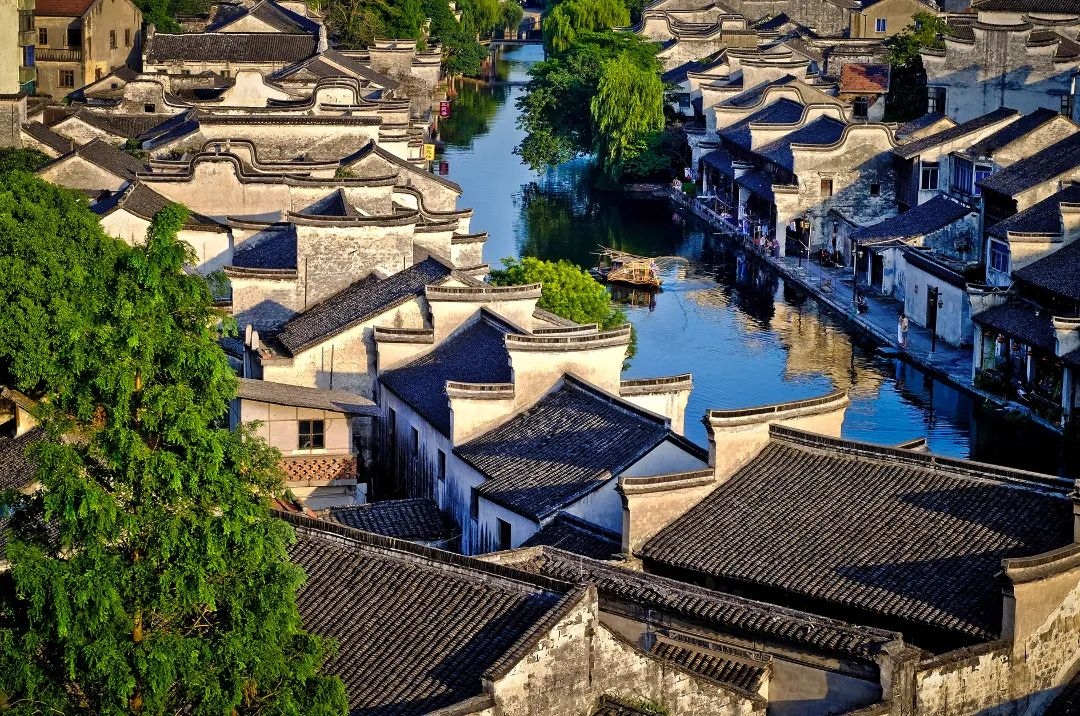
In this national historical and cultural city with a history of 1 million years of living and more than 2300 years of city construction, the style of Tang Dynasty and Song Dynasty moistens the distant mountains and near the water. The poems and poems recite the treasures of things and treasures. The meaning of Jiangnan is deeply embedded in fish, rice, silk porcelain, books, swords, tea and wine.
Huzhou is undoubtedly Jiangnan, but she has recently been full of confidence to win the "most Jiangnan".
Not long ago, Huzhou was elected as the "Cultural Capital of East Asia" in 2025, proposing to create the "most Jiangnan" cultural window. On September 20, the 12th Hubi Culture Festival was held with the theme of "Meeting the Most Jiangnan in Huzhou".
In the eyes of the Huzhou Municipal Party Committee and Municipal Government, which has always been pragmatic,"the most Jiangnan" is not a false name. From ancient times to the present, along with the prosperity of Jiangnan's commodity economy and the development of material civilization, Jiangnan culture, which values literature and education, is open and integrated, and draws on the strengths of others, has emerged as the times require and has become an important promoter of historical development. Nowadays, the "most Jiangnan" culture will also become the continuous driving force for Huzhou to "make persistent efforts, follow the trend, and advance on the victory."
So, why does Huzhou, which has always been in the geographical and cultural core area of Jiangnan, deserve to become the "most Jiangnan"?
a
When talking about Jiangnan, people often think of the first stone bridge in the drizzle, the winding water alleys, and the antique pavilions and pavilions. However, Jiangnan is far more than that: the mountains in the south of the Yangtze River have both the majesty of Tianmu Mountain and the beauty of Mogan Mountain; the water in the south of the Yangtze River has both the vast expanse of smoke and mist of Taihu Lake and the clarity of Tiaoxi River.
It is not an exaggeration to say that Huzhou's mountains and rivers are "the most in the south of the Yangtze River".
The topography and landform of the Jiangnan area are characterized by hills, plains and abundant water. Japanese scholar Shibo Yoshixin pointed out in his "Research on the Economic History of Jiangnan in the Song Dynasty":"Huzhou is the epitome of the entire middle and lower reaches of the Yangtze River."
Overlooking the land of Huzhou, the west and south are the mountains and hills of the Tianmu Mountains, and the east and north are the water town plains. The natural landscapes of the two are completely different. On the west side, the mountains are high and dense, and the east side is flat and empty. Huzhou's mountains, hills, and plains are distributed in steps, with an altitude drop of as much as 1500 meters, forming an extremely rich sub-geomorphic form."Five mountains, one water and four fields" constitute the unique beautiful scenery of Jiangnan in Huzhou, with extremely rich landscapes.
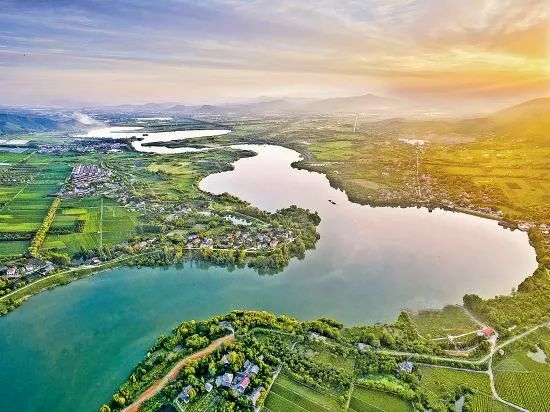
The "Wuxing Qingyuan Painting", now collected in the Shanghai Museum, was written by Zhao Mengfu, a native of Huzhou, when he first went to Huaixiang in the north. He pushed the means of landscape painting to express the "far" spatial conception to the extreme. The vast sky and open water actually occupy the vast majority of the painting. The winding green mountains are painted in the middle of the frame from right to left. The overall mountain is getting farther and farther away, extending into the distant water sky.
In "Wuxing Mountains and Waters Qingyuan Map", Zhao Mengfu described in detail the Qingyuan landscape of Tianmu with winding mountains and swamps, and the lonely hills dotted with stars."On a good day in the Spring and Autumn Period, small boats flow south of the city, and mountains surround it, like jade cut, floating in the air on the water, low with the boat, and the Dongting Mountains are visible in the sky, which is the clearest distance."
Shen Zongqian, a poet and painter of the Qing Dynasty, said even more proudly: "I, Wu Xing, have clear mountains and rivers, and I am the best in the world."
second
If Jiangnan had no water, it would not be called a water town. The water flowing in Huzhou is worthy of the saying "the most Jiangnan".
Huzhou is located in the northern part of Zhejiang Province, at the intersection of Zhejiang, Jiangsu and Anhui provinces. It faces Wuxi and Suzhou across the lake. It is the only city in the Taihu Lake area named after the lake. The crisscross and extending water system nourished by the Jiangnan Canal is like arteries and blood vessels, forming the structure of Huzhou villages. Almost every village in the plain has boats passing through.
In Huzhou, the vocabulary expressed in different waters is very rich. In addition to the common rivers, rivers, lakes, and streams, there are also words with specific connotations such as Lou, Bang, Du, Zhu, Hao, Jing, Pu, Bay, Hui, etc., which give water different meanings and together constitute Huzhou's rich and meaningful charm as a water town in the south of the Yangtze River.
Lougang is a water conservancy concept that belongs exclusively to Taihu Lake: long and narrow rivers connecting the inland have turned silt into fertile soil. It is a witness to the history of water control in the Taihu Lake Basin over the past two thousand years. The ancestors of Huzhou dug Lougang on the basis of the natural water system, forming a unique checkerboard water network system along the Taihu Lake with "horizontal ponds and vertical buildings, connected positions and positions". It consists of a river canal system, sluice, and embankment. It has comprehensive functions of drainage, irrigation and water transportation.
Since the construction of Yutang in the Western Jin Dynasty, Yutang and several other east-west horizontal ponds and dozens of Lougang running from north to south have formed a dense water network, forming a belt of Lougang-Weitian-canals, city-town-villages. The living environment system composed of Huzhou Urban area with Zhili, Jiuguan, Nanxun and other towns and a large number of villages into a close and indivisible whole.
Now walking into Yigao Ancient Village, Wuxing District, Huzhou, you can see the long-standing Taihu Lougang culture. Huzhou Taihu Lougang polder field system, composed of canal pond, Taihu Lougang, numerous horizontal ponds and thousands of acres of polder fields, smoothly discharges water from the east and west tiaoxi into Taihu Lake, making Huzhou a feng shui treasure place without fear of floods and droughts; She has developed large areas around Taihu Lake The wet land has been developed into stable and high-yield fertile farmland, and Huzhou has become a veritable "granary in the world"; the mulberry fish pond system she has derived and bred is the material basis for Huzhou to become the "Silk House": She has built a developed canal water network system, making Huzhou one of the most developed inland waterway areas in the country. This water system formed through thousands of years of practice has become the foundation for Huzhou's stability of life, economic prosperity, and cultural prosperity.
three
Jiangnan has been rich since ancient times. The appearance of the "Four Elephants and Eight Ox" in Nanxun, Huzhou at the end of the Qing Dynasty and the beginning of the Republic of China gave a concrete expression to the gathering of merchants and the world's wealth.
During the Guangxu period, the annual income of the entire Qing government was about 70 million taels of silver, while the assets of the Liu family, the head of the "Four Elephants and Eight Ox" family in Nanxun, reached 20 million taels, and the Zhang family also had a total of 12 million taels. If the property of the wealthy businessman family in Nanxun is added up, the assets are much higher than the annual income of the Qing government.
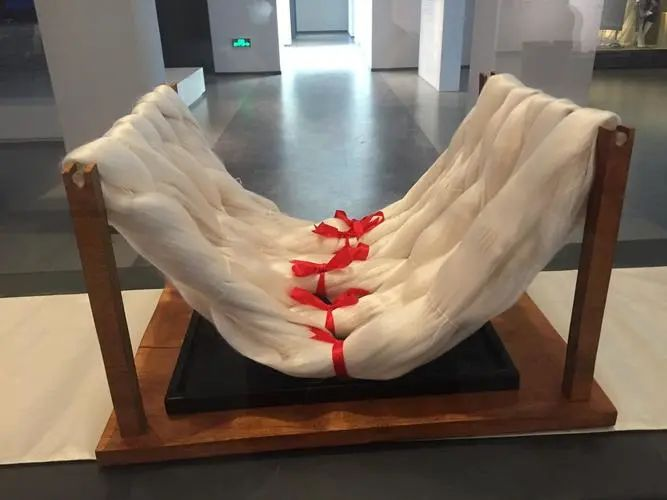
"Silkworms are the only ones in Wuhu Lake. Among the counties, Nanxun is the most powerful one." Most of the wealthy businessmen in Nanxun started their business with the "Jili Lake Silk" trade. Looking at its historical background, since the Song Dynasty, the Jiangnan area has developed characteristics such as the growth of commercial agriculture, the rise of towns and the acceleration of urbanization, forming a "agricultural-commercial society" in which farmers and businessmen developed in parallel. The economic structure system is based on agriculture, commerce, handicrafts and animal husbandry. Pluralistic parallel.
Relying on its location in the center of the Jiangsu and Hangzhou metropolitan area in the south of the Yangtze River and its water transportation network extending in all directions, commercial agriculture and handicrafts such as silk, porcelain, pens, and tea are developing rapidly in Huzhou.
A piece of silk unearthed at the Qianshanyang site has been confirmed to be the earliest domestic silk fabric discovered so far in the world, pushing Huzhou's silk production history back to 4200 years. As time went by, Huzhou silk became more and more famous. From overseas trade during the Six Dynasties, to royal tributes in the Tang Dynasty, to "Jili silk" in the Ming and Qing Dynasties, Huzhou silk has always been synonymous with high-quality silk. At its peak,"tens of thousands of gold were traded in one day."
Look at Huzhou porcelain again. The original porcelain producing area in the middle reaches of Dongtiaoxi has witnessed the origin and development of Chinese porcelain manufacturing. Deqing Kiln is famous for firing both black porcelain and celadon. It is mainly celadon and is famous for its black porcelain. It has regular production, firm and delicate body quality, green glaze color, uniform glaze application, and strong glass texture. It can almost be compared with celadon since the Eastern Han Dynasty. At the ruins of Qinglong Town, an important trading port in the Tang and Song Dynasties, a large number of Tang Dynasty Deqing kiln porcelain were found, which not only demonstrated the superb skills of Deqing kiln, but also reflected the extensive exchanges between Huzhou and the outside world at that time.
The "source of the world's pearls" is also in Deqing, and tea is both elegant utensils. As early as the 13th and 4th centuries, Ye Jinyang, a native of Huzhou, invented the method of cultivating pearls with shells. By the Ming Dynasty, pearl farming in Huzhou had become quite popular."The fish seedlings were small before planting, and the pearls produced were round."
Huzhou is also the "source of tea ceremony". Lu Yu wrote "Tea Classics" when he lived in seclusion in Huzhou. The tribute and roasting of purple bamboo shoots in the Tang Dynasty led to the production of tea in Huzhou, and the tea trade also emerged. Du Mu once wrote an article: "When tea is ripe, merchants from all over the world will gather brocade, gold hairpin and silver instructions, and enter the mountains to trade." Today, Huzhou's famous teas such as Changxing Purple Bamboo Shoots, Anji White Tea, and Mogan Yellow Tea have not only obtained national geographical indication product certification, but are also regarded as Jiamin.

The skills of "Huying" are among the best in the world. Hu brushes are all refined from high-quality goat hair. The so-called "Ying" means that there is a neat and transparent sharp Ying at the top of the brush head. The Ming Dynasty's "Hongzhi Huzhou Prefecture Annals" records: "Huzhou has written books and works all over the country. The writers are all lakers. Its place is Shanlian Village." One sentence tells that people who are good at Lian are both pen makers and pen sellers, working and trading all over the country.
These commercial products, which were produced for exchange from the beginning, are sufficient to show that Huzhou Jiangnan merchants have a long history and the people are prosperous. For example, Zhao Mengfu's "Wu Xing Fu" describes: "Where the land is born, the atmosphere is suitable, people have no external demands, and there is plenty of use."
four
Riding Huzhou's "Green Lake Shadow" cruise ship is like appreciating a general water history of Huzhou with a new Jiangnan aesthetics. It is hard not to be shocked by the thousand-year-old elegance of Huzhou. The allusions of Wu Xingji painter Zhang Sengyao's "finishing touch", the "Huzhou Literary Group" joint singing in western Zhejiang, Su Dongpo's love for this mountain, Zhao Mengfu and Guan Guancheng's "Guan Zhao's romantic style" all originated in Huzhou.
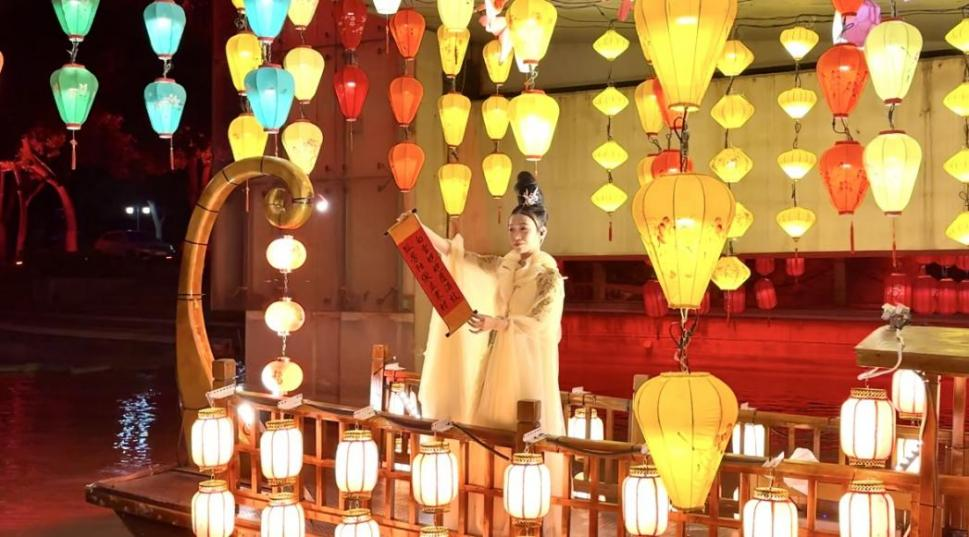
Huzhou's cultural context is connected with the mountains and rivers of the south of the Yangtze River, has its own aesthetic form of "Qingyuan", and has distinctive original ecological regional characteristics. It also conforms to the deep wishes of Chinese literati.
"Wuxing has been a good place since the Eastern Jin Dynasty. It is known as the mountains and rivers and Qingyuan. Its people are full of benefits from fish, rice, and lotus flowers. They seek little but not compete. Guests don't come unless they have something to do with their place. Therefore, all those guarding the county usually use romantic singing and drinking wine." Su Shi portrayed Huzhou's social stability to the bone in his "Memories of Mo Miao Pavilion".
The superior natural environment and stable and affluent life make Huzhou a fertile ground for cultural development. The local literati have a good tradition of poetry and calligraphy, and they have attracted a large number of foreign literati and literati to gather here to recite poems and compose Fu, splash ink, meet friends with literature, enjoy mountains and rivers, collect books and identify treasures, sip tea and compete for tea, and escape from meditation. Therefore, the cultural context has been deeply accumulated.

The charm of "the most Jiangnan" flows from the pen.
The one who best interprets the artistic conception of Qingyuan in Huzhou is Zhao Mengfu. This Wuxing scholar, who was omnipotent in poetry, calligraphy and printing, was born in Huzhou and grew up in Huzhou. He lived in seclusion in Huzhou for a long time before becoming an official in Mengyuan at the age of 33. His mulberry complex is revealed in his pen. When Zhao Mengfu was young, he wrote "Wu Xing Fu" praising Huzhou's scenery, history, products, and enlightenment. In the handed down work "Wu Xing Qingyuan Painting", Zhao Mengfu used a large number of "blank space" techniques to express the endless sky and water.
It's not just Zhao Mengfu. Half of a history of calligraphy and painting is in Huzhou. Along with Zhao Mengfu's "Wu Xing Fu Volume" and also known as the "Huzhou Four Tites" are calligraphy treasures Wang Xianzhi's "Wu Xing Tie", Yan Zhenqing's "Huzhou Tie", Mi Fu's "Tiaoxi Poetry Tie", and Li Jie's "Xisai Fishing Society Picture", Qian Xuan's "Fuyu Mountain Residence Picture", and Wang Meng's "Qingbian Hermit Picture" are all Huzhou.
five
Huzhou has "combination advantages" such as ecological environment, history and humanities, location and transportation, industrial foundation, and urban-rural coordination, which are difficult for other places to combine and can be regarded as the "most" word.
Nowadays, the "most Jiangnan" that Huzhou wants to create not only has the beauty of rippling blue waves, the pastoral beauty of clear mountains and rivers, and the beauty of profound humanities, but also has the intertwined resonance of the flavor of two mountains, the charm of Jiangnan, and the style of the times.
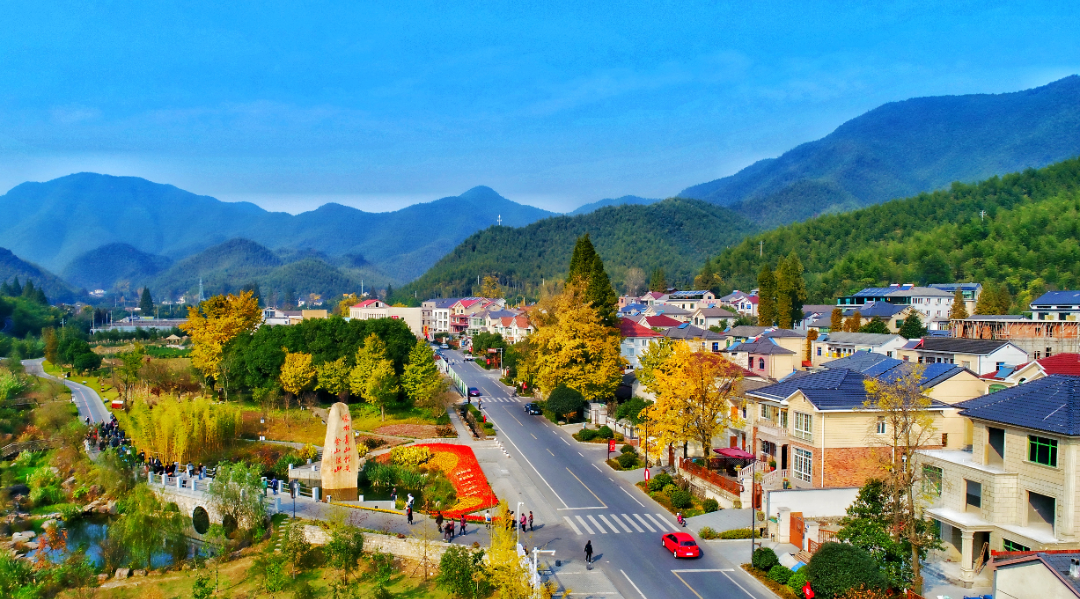
The regional concept of "Jiangnan" is flexible. But one thing remains constant is that Jiangnan often represents a prosperous and developed economy and a beautiful and prosperous water town scene.
In terms of life, you can experience the aesthetics of life in Huzhou: clear water passes through the town, people rest on the river, and small bridges are close to old houses, and you can immerse yourself in the warmth and warmth of the south of the Yangtze River;65 city study rooms, 46 cultural tourism stations, 103 rural museums are cultural spaces for people to read, sip tea, relax, and enjoy the "Baitan" life; the unique Jiangnan flavor of the mountains, rivers, humanities, and landscapes make the "lake-style" rural living life a "poem and distance" for many tourists.
In urban construction, the significance of "most Jiangnan" is multi-dimensional and far-reaching.
Through this unique cultural label, it embodies Huzhou's urban spirit and values, and demonstrates the charm of the city to attract outside attention. It also enhances citizens 'awareness and pride of local culture, and stimulates society to protect, inherit and innovate traditional culture. Passion for innovation, and in turn promotes the establishment of cultural confidence.
Moreover, the role of Jiangnan culture in promoting Huzhou's economic development and industrial upgrading and transformation has also been confirmed in history, and traditional industries such as silk, tea, and porcelain are expected to inject new impetus. In terms of social harmony and sustainable development, the ecological livability and green development concepts advocated by "Most Jiangnan" can improve residents 'quality of life and achieve harmonious coexistence between economic and social development and the natural environment.
Huzhou, in the name of "the most Jiangnan", continues to glow with the brilliance of Jiangnan culture.
